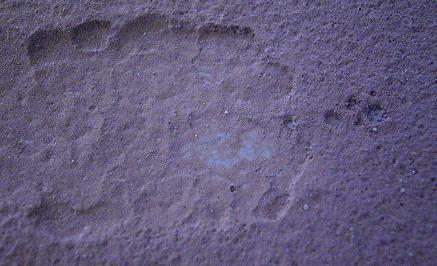Nah, NASA wouldn't stoop that low! for a publicity stuntwebolife wrote:...I think this is hype....
http://thelede.blogs.nytimes.com/2012/1 ... -revealed/
Nah, NASA wouldn't stoop that low! for a publicity stuntwebolife wrote:...I think this is hype....
I'd love to see time lapse pictures of one location to see how they justify this explanation. There clearly are raised Lichtenberg figures on the RHS of the image and hints of the same in the lower portion of the large ridge in middle. I wonder what processes NASA imagines causes these.This image was acquired in southern spring, but the flow that formed the deposit occurred in the preceding winter.
Current gully activity appears to be concentrated in winter and early spring, and may be caused by the seasonal carbon dioxide frost that is visible in gully alcoves in the winter.
That's what I thought they looked like myself.tayga wrote:From the text beneath the picture:
I'd love to see time lapse pictures of one location to see how they justify this explanation. There clearly are raised Lichtenberg figures on the RHS of the image and hints of the same in the lower portion of the large ridge in middle. I wonder what processes NASA imagines causes these.This image was acquired in southern spring, but the flow that formed the deposit occurred in the preceding winter.
Current gully activity appears to be concentrated in winter and early spring, and may be caused by the seasonal carbon dioxide frost that is visible in gully alcoves in the winter.
I'd say this is one of those instances where preconceived ideas might cause selective blindness.neilwilkes wrote:That's what I thought they looked like myself.tayga wrote:There clearly are raised Lichtenberg figures on the RHS of the image and hints of the same in the lower portion of the large ridge in middle. I wonder what processes NASA imagines causes these.
Happy I am, not hallucinating (unlike certain other publicly funded bodies, it seems)
Lloyd wrote:Lava Coil Comparison
* These next two images are of another part of Cerberus Fossae, that show the polygons. The second image is a closeup from the first one.
http://www.psi.edu/sites/default/files/ ... /Thaw1.jpg
http://www.psi.edu/sites/default/files/ ... /Thaw1.jpg
http://www.psi.edu/sites/default/files/ ... /Thaw3.jpg
* One thing that's odd is that the polygons appear on the upper level, on the downward slopes, and somewhat on the lower levels. So how could that happen? Did the upper level melt and then start to harden, and then electric discharging scooped out some sections, with the scalloped sides, and remelted some of the downward slopes?

We do indeed have an explicit purpose of the Innovative Experiment Prize, Michael: to determine how far an experiment can go in producing dendritic ridge formation by electrical means. For the EU community as a whole, that is a crucial question. Since blowing and avalanching sand can produce substantial electric fields and both subtle and not-so-subtle electrostatic effects, it would be interesting to see someone explore that connection. Some questions of this sort may not be answered until the dynamics are investigated more closely.starbiter wrote:Hi Max,
The rules of the contest are for an electrical explanation of dendritic ridges. Your mechanical explanation would not qualify, the way i read the rules. Nor would a process similar to welded tuff deposition. Even if our explanations were correct.
Users browsing this forum: No registered users and 97 guests